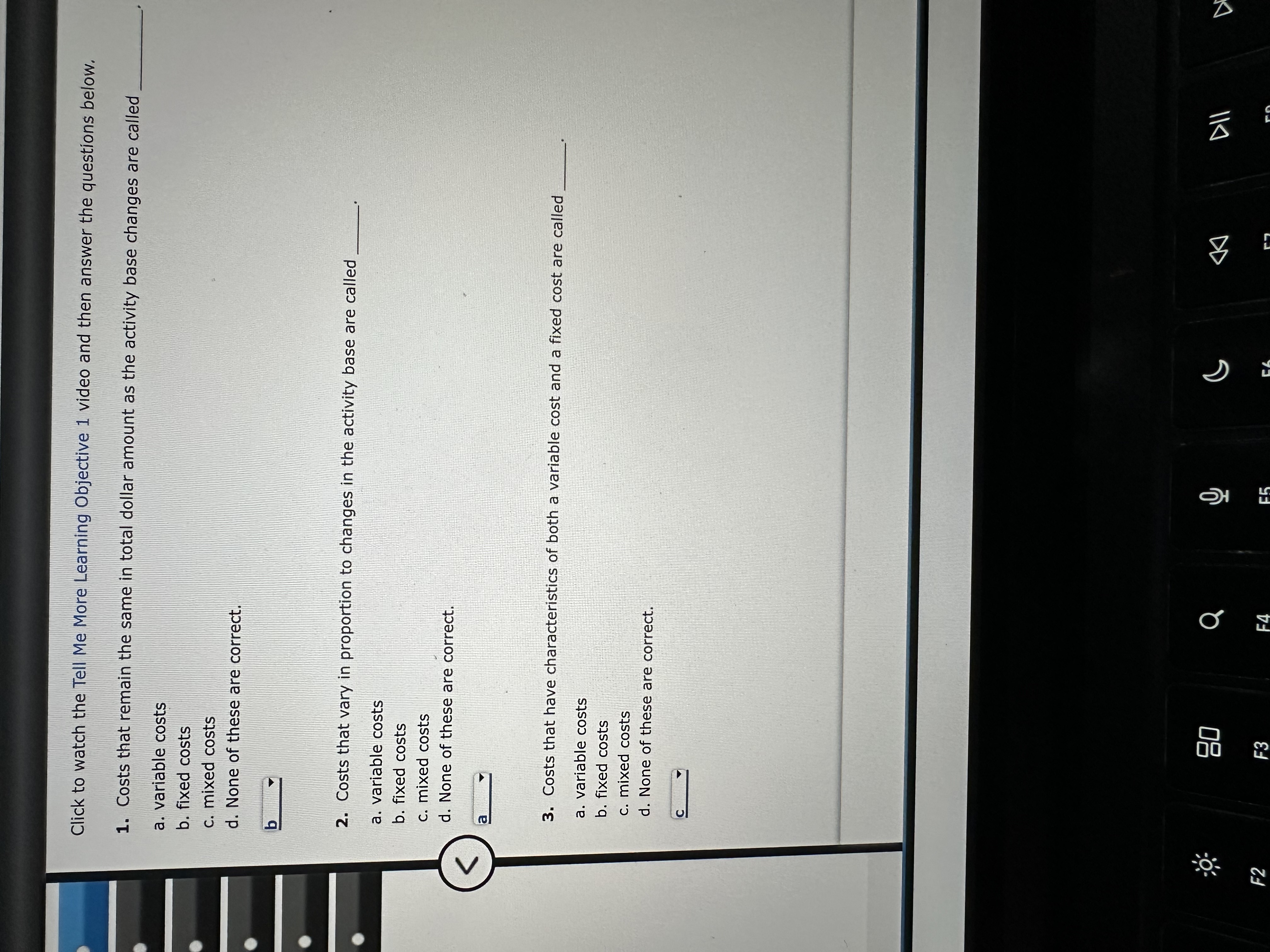Answered step by step
Verified Expert Solution
Question
1 Approved Answer
Click to watch the Tell Me More Learning Objective 1 video and then answer the questions below. Costs that remain the same in total dollar
Click to watch the Tell Me More Learning Objective video and then answer the questions below.
Costs that remain the same in total dollar amount as the activity base changes are called
a variable costs
b fixed costs
c mixed costs
d None of these are correct.
Costs that vary in proportion to changes in the activity base are called
a variable costs
b fixed costs
c mixed costs
d None of these are correct.
Costs that have characteristics of both a variable cost and a fixed cost are called
a variable costs
b fixed costs
c mixed costs
d None of these are correct. Click to watch the Tell Me More Learning Objective video and then answer the questions below.
All of the following are ways in which costvolumeprofit analysis may be used except when
a analyzing the effects of changes in costs on profits
b analyzing the effects of changes in volume on profits
c analyzing the effects of changes in selling prices on profits
d All of these may be used.
d
Contribution margin is the
a excess of sales over fixed costs
b excess of variable costs over sales
c excess of sales over variable costs
d None of these are correct. Click to watch the Tell Me More Learning Objective video and then answer the questions below.
Breakeven sales in units is computed as
a Fixed Costs Unit Contribution Margin
b Fixed Costs Contribution Margin
c Fixed Costs Contribution Margin Ratio
d None of these are correct.
a
When the fixed cost increases, the breakeven point
a decreases
b increases
c does not change
d None of these are correct.
If the unit selling price increases, then the breakeven point
a decreases
b increases
c does not change
d None of these are correct. Click to watch the Tell Me More Learning Objective video and then answer the questions below.
Which of the following is a primary assumption in a costvolumeprofit analysis?
a Total sales and total costs can be represented by straight lines.
b There is no change in the inventory quantities during the period.
c Costs can be divided into fixed and variable components.
d All of these are correct.
Which type of chart plots only a profit line rather than sales and cost lines?
a Costvolumeprofit chart
b Profitvolume chart
c Profitcost chart
d Costvolume chartClick to watch the Tell Me More Learning Objective video and then answer the questions below.
The difference between contribution margin and income from operations is
a net income
b variable costs
c fixed costs
d None of these are correct.
A company's operating leverage is computed as
a contribution margin divided by income from operations
b contribution margin divided by net income
c contribution margin ratio divided by income from operations
d None of these are correct.
The sales mix is the relative distribution of sales among the products sold by a company.
The unit selling price of the overall enterprise product equals the
a average selling price of the products
b price of the highestselling product in the mix
c price of the product with the lowest selling price
d None of these are correct.

Step by Step Solution
There are 3 Steps involved in it
Step: 1

Get Instant Access to Expert-Tailored Solutions
See step-by-step solutions with expert insights and AI powered tools for academic success
Step: 2

Step: 3

Ace Your Homework with AI
Get the answers you need in no time with our AI-driven, step-by-step assistance
Get Started


